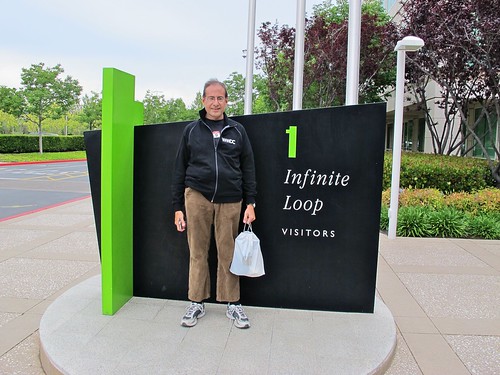I haven’t had a chance to write any blog posts last week while I was at WWDC, but I had a great time and learned a lot. This may have been the most important WWDC in recent years.
While last year’s WWDC focused primarily on iOS, this year’s conference was about equally split between iOS 5 and Mac OS X Lion. Both systems share some major enhancements including iCloud storage and Objective C runtime improvements that make memory management easier and a lot faster. I can’t write about much of what I saw, since everything except the keynote is under NDA. I will say that I’m running iOS 5 on my iPad and Lion on my MacBook Air and I’m very happy with both and find them stable enough for regular use. I haven’t installed iOS 5 on my iPhone, though.
On Sunday I went on the annual bus Pilgrimage to Apple’s headquarters in Cupertino. As always, the only thing we were able to see was the Apple company store. I took advantage of it to pick up a USB Ethernet adapter for my MacBook Air, since large downloads aren’t allowed over wireless connections during WWDC. I was pleasantly surprised by how fast the MacBook Air USB adapter is and how it just works without any fuss, unlike USB ethernet adapters I’ve used in the past.
WWDC isn’t all work. There are also a few fun events, starting with Tuesday night’s Apple Design Awards and Stump The Experts. One highlight of the conference is always the Thursday night WWDC Bash. Since the Bash moved from Apple’s campus in previous years to Yerba Buena Garden across from Moscone Center, Apple has been getting major bands to perform at the Bash. In previous years they had Ozomotli, Barenaked Ladies, Cake, and OK Go. This year they got Michael Franti & Spearhead for a great show.
The conference ended at noon on Friday, so I took advantage of the rest of the day to enjoy San Francisco. I walked from Moscone to the Ferry Building & took lots of pictures, which you can see here. I only brought my Canon G12, since I didn’t feel like lugging the D90. I’m very happy with the results, both for still photos & videos.
